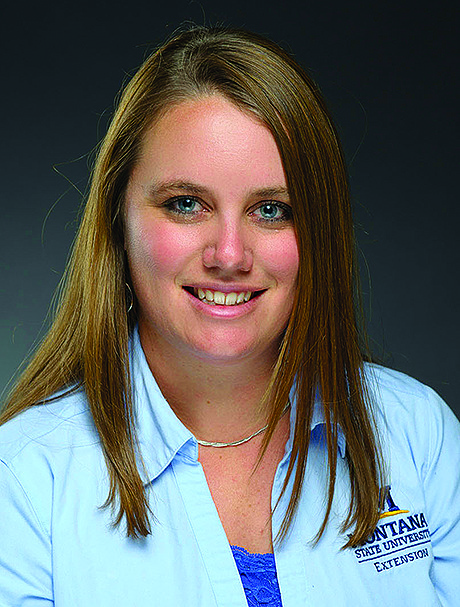Landscaping with Native Plants
 | Author:
Allison Kosto, MSU Broadwater County Extension Agent
MSU Broadwater County Extension Agent |
Landscaping with Native Plants Allison Kosto, MSU Broadwater County Extension Agent Look out your window. What do you see? Lawn? Trees? Landscaped area? Or maybe still a mound of snow? Even under that snow lies plants who are waiting to come out of dormancy. Many of our common landscape grasses, trees, shrubs and flowers are not native. While this isn’t necessarily a bad thing there are some advantages to using native species and there is an increased interest in incorporating native plants into the landscape.
Defining a native plant should be simple and straightforward, but it’s not. According to the Federal Registry, native species are “all species of plants and animals naturally occurring, either presently or historically, in any ecosystem". The Forest Service defines a native plant as “all indigenous terrestrial and aquatic plant species evolved naturally in a defined native ecosystem”. You may find neither definition particularly helpful as ecosystems are constantly evolving and changing with their environment. Introduced grasses can spread naturally throughout local ecosystems and become well established. Some states and organizations further define native plants as plants that grew naturally in the environment prior to settlement of European immigrants. This tends to be a preferred definition.
There are many reasons to use native plants in the landscape. Since the plants are adapted for our climate, they are often lower maintenance, require less water and reduce fertilizer and pesticide use. There is also less potential that the plants will become invasive and spread beyond your landscape. Native plants can increase biodiversity and celebrate our history and heritage.
Do your research though to make sure the plant is truly native. Since the term native is a little subjective, it's an easy ploy for marketers to utilize. Native species can also have different names in different areas of the state or through different cultures. Through the use of scientific names, we can ensure that we are all referring to the same plant. For example, Rocky Mountain Bee Plant also goes by the name Spider-Flower. However, through using the scientific name, Cleome serrulate, you are sure to be discussing the same plant.
The next challenge is to match the location and with the right plant. Even though a plant is native, it doesn’t mean it will grow anywhere. Montana is a very diverse state from high alpine meadows to the plains. Plants that are suited for one area of the state and one environment, may not do well in another, even in the same zip code.
A good example is quaking aspen trees. They are a popular choice for the backyard. However, in their native environment they prefer riparian areas and moist soils. They do not tolerant alkaline soils well, have a shallow root system and send out a lot of suckers. Homeowners often quickly discover that quaking aspen are lot of work and take a tremendous amount of water. In reality, they are probably not a great choice for many yards, even as a native plant. Do you research to understand the ideal environment for your native plant choices so that it’s a good fit. The Montana Native Plant Society has plant lists for different areas of the state.
After selecting the ideal plant, next comes planting and care. If they are not planted correctly, they will not thrive and may not even survive. Care is equally important. Even though native plants can be low maintenance, they are not no maintenance. Some level of care is still needed especially as they get established.
Here are some resources on native plants: • Montana Native Plants Society – https://www.mtnativeplants.org/ • Montana Field Guide – http://fieldguide.mt.gov • USDA Plant Database – https://plants.sc.egov.usda.gov
Also stop by local businesses such as Townsend Hardware and Rocky Mountain Supply who often have native plant species available each spring. Native plant resources are also available from MSU Extension in Broadwater County. Stop by the office in the Flynn Building at 416 Broadwater in Townsend or contact 406-266-9242 or allison.kosto@montana.edu.